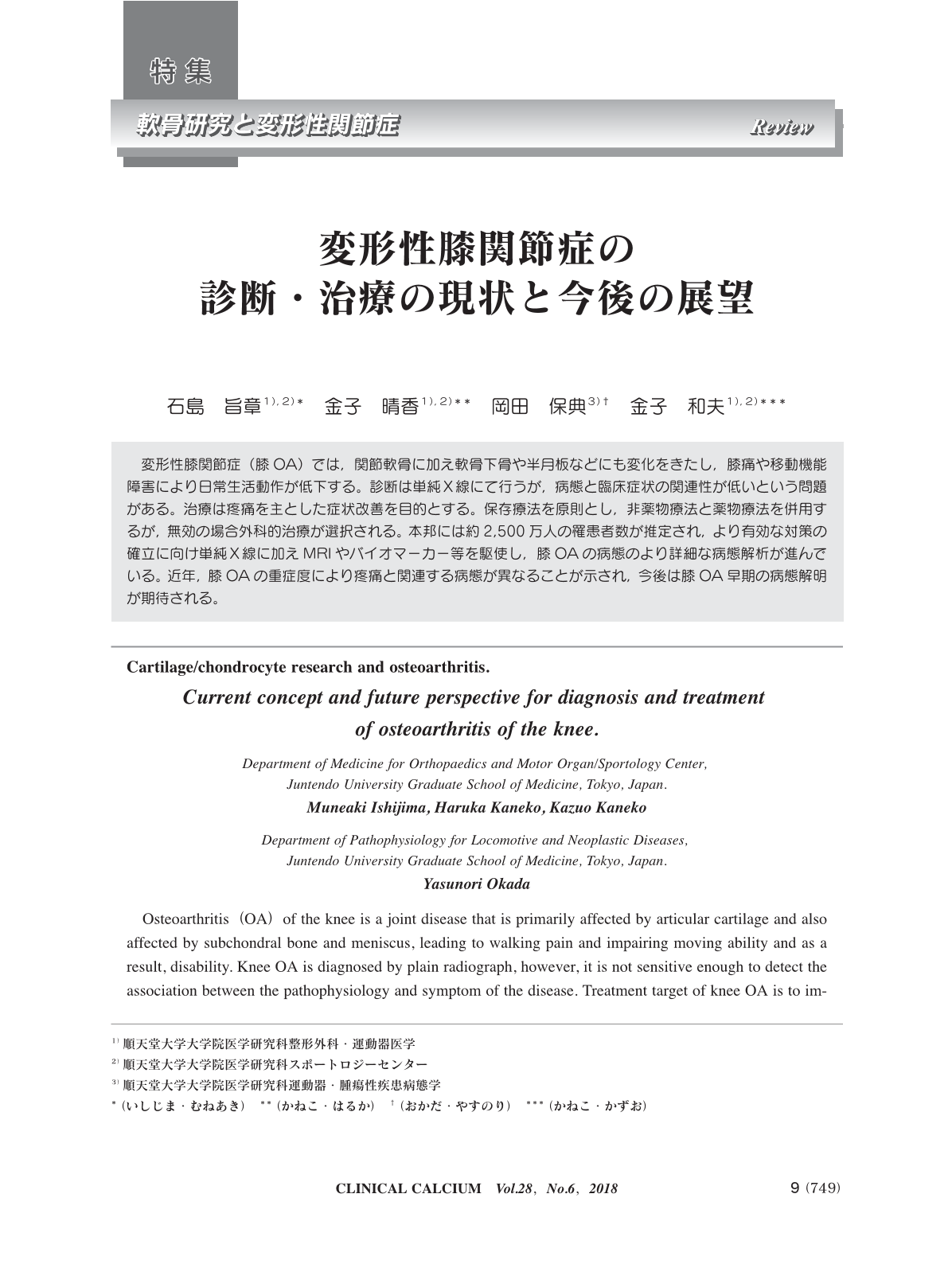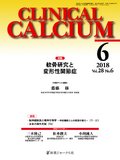Japanese
English
- 有料閲覧
- Abstract 文献概要
- 1ページ目 Look Inside
- 参考文献 Reference
- サイト内被引用 Cited by
変形性膝関節症(膝OA)では,関節軟骨に加え軟骨下骨や半月板などにも変化をきたし,膝痛や移動機能障害により日常生活動作が低下する。診断は単純X線にて行うが,病態と臨床症状の関連性が低いという問題がある。治療は疼痛を主とした症状改善を目的とする。保存療法を原則とし,非薬物療法と薬物療法を併用するが,無効の場合外科的治療が選択される。本邦には約2,500万人の罹患者数が推定され,より有効な対策の確立に向け単純X線に加えMRIやバイオマーカー等を駆使し,膝OAの病態のより詳細な病態解析が進んでいる。近年,膝OAの重症度により疼痛と関連する病態が異なることが示され,今後は膝OA早期の病態解明が期待される。
Osteoarthritis(OA)of the knee is a joint disease that is primarily affected by articular cartilage and also affected by subchondral bone and meniscus, leading to walking pain and impairing moving ability and as a result, disability. Knee OA is diagnosed by plain radiograph, however, it is not sensitive enough to detect the association between the pathophysiology and symptom of the disease. Treatment target of knee OA is to improve symptom, mainly pain. A conservative treatment is the principle of knee OA treatment, in which the combination of non-pharmacological and pharmacological treatment is primarily recommended. When the conservative treatment is ineffective, surgical treatment could be selected. It is estimated that there are 25 million people with radiographic knee OA in Japan. Recent researches using MRI and biomarkers, in addition to radiograph, have been revealed the precise mechanisms of pathophysiology of knee OA. Recently, it has been suggested that the pathophysiologies associated with pain in knee OA are altered depending upon the severity of disease. It has been expected that the pathophysiology of early stage knee OA will also be clarified.



